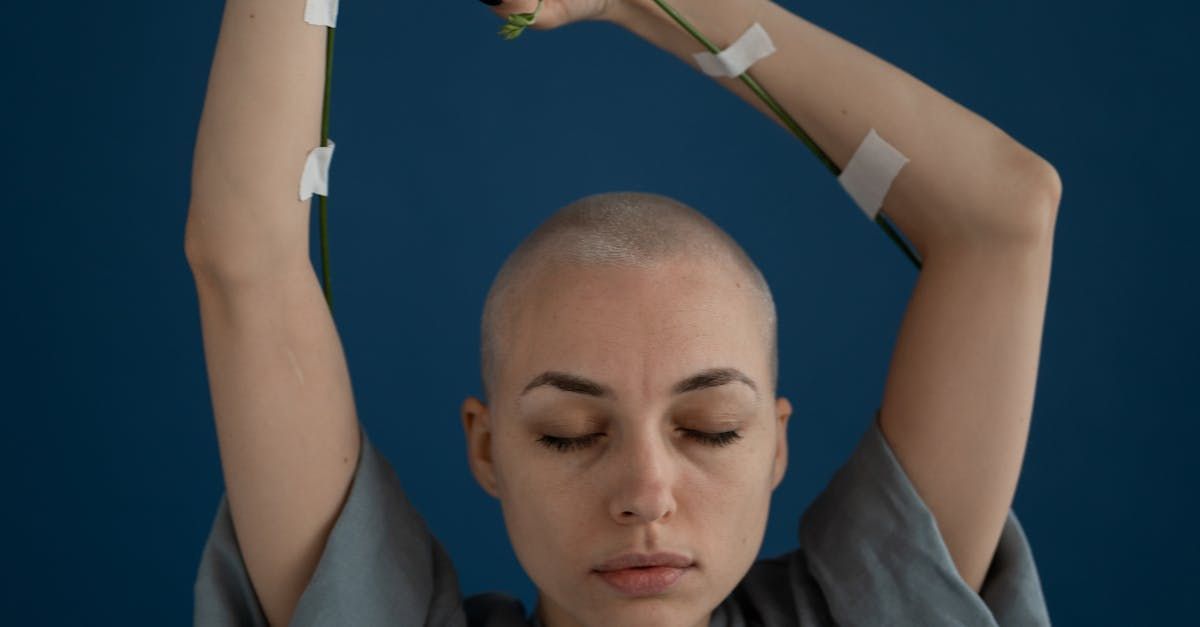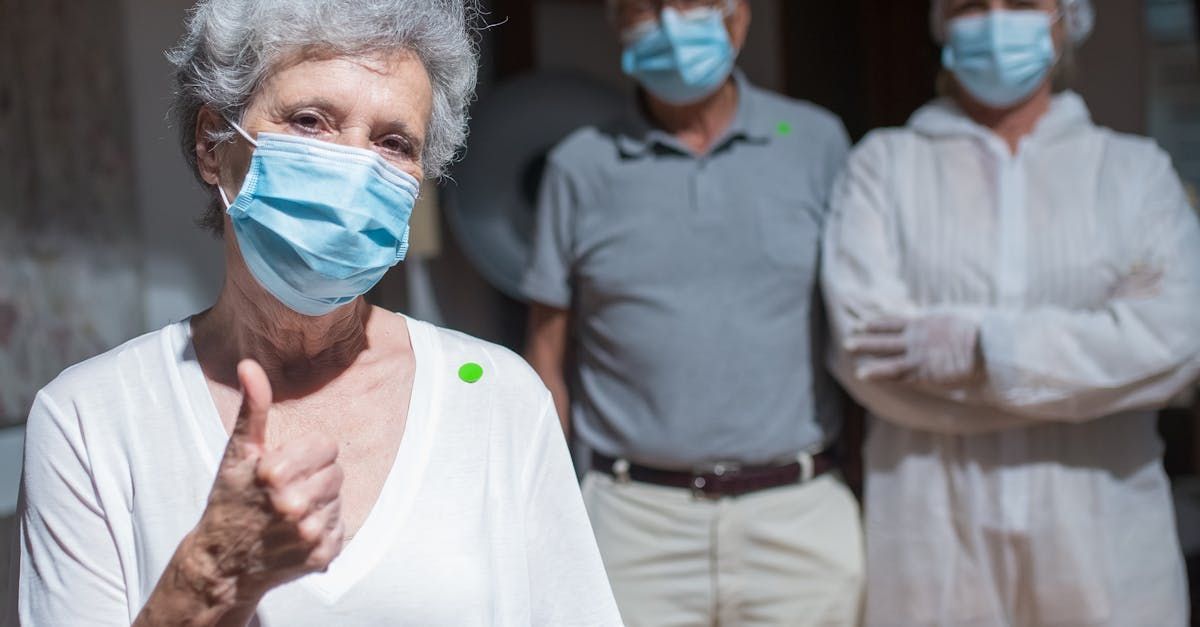Virtual Reality and Simulation in Clinical Trials
In recent years, virtual reality (VR) and simulation technologies have transcended the realm of entertainment and gaming, finding meaningful applications in various industries, including healthcare. These innovative technologies are now playing a transformative role in clinical trials, revolutionizing the way medical research is conducted. From enhancing patient engagement to improving the accuracy of data collection, VR and simulation are reshaping traditional clinical trial methodologies.
Clinical trials are essential for advancing medical science, testing the efficacy and safety of new treatments, drugs, and medical devices. However, traditional clinical trial methods often face challenges such as participant recruitment and retention, high costs, and logistical complexities. The integration of VR and simulation technology offers promising solutions to these challenges, providing a more immersive, efficient, and effective approach to conducting clinical research.
In this blog, we will explore the evolution of VR and simulation in healthcare, the various types of technologies used in clinical trials, and the numerous benefits they bring to the table. We will also delve into real-world case studies that highlight the successful application of these technologies in clinical trials, discuss the challenges and limitations, and look at future trends and innovations poised to further revolutionize the field. Join us as we journey through the exciting landscape of virtual reality and simulation in clinical trials, uncovering how these cutting-edge technologies are paving the way for the future of medical research.
The Evolution of VR and Simulation in Healthcare
Virtual reality (VR) and simulation technologies have evolved significantly over the past few decades, transitioning from experimental concepts to integral tools in healthcare. This evolution has been marked by continuous advancements in technology, improved accessibility, and an expanding range of applications that enhance patient care, medical training, and clinical research.
Early Beginnings: Conceptual and Experimental Stages
The concept of virtual reality dates back to the mid-20th century when early visionaries imagined immersive environments for training and entertainment. However, the technology remained largely conceptual until the late 1980s and early 1990s, when the first functional VR systems began to emerge. These early systems were rudimentary, expensive, and limited in their capabilities, primarily used for military training and flight simulations.
Advancements in Technology: From Basic Simulations to Immersive Experiences
As computing power increased and graphics technology advanced, VR and simulation technologies began to offer more realistic and immersive experiences. In healthcare, this led to the development of early medical simulations for training purposes. These simulations allowed medical students and professionals to practice surgical procedures and clinical skills in a risk-free environment, significantly improving the quality of medical education.
Integration into Medical Training and Education
By the early 2000s, VR and simulation had become more prevalent in medical training and education. High-fidelity simulators, such as mannequins capable of mimicking human physiology, were introduced to medical schools and teaching hospitals. These simulators provided realistic scenarios for practicing emergency responses, surgical techniques, and patient interactions.
The introduction of VR headsets further enhanced the training experience, allowing for fully immersive simulations. Medical professionals could now practice procedures in a virtual environment that closely resembled real-life settings, enhancing their skills and confidence.
Expansion into Therapeutic and Rehabilitation Applications
Beyond medical training, VR technology found applications in therapeutic and rehabilitation settings. VR-based therapies were developed to treat conditions such as post-traumatic stress disorder (PTSD), anxiety, and chronic pain. Patients could engage in controlled virtual environments to manage their symptoms and improve their quality of life.
In rehabilitation, VR simulations provided engaging and interactive exercises for patients recovering from strokes, injuries, or surgeries. These exercises were tailored to individual needs and monitored in real-time, allowing therapists to track progress and adjust treatment plans accordingly.
Emergence in Clinical Research and Trials
The potential of VR and simulation in clinical research began to gain recognition in the 2010s. Researchers explored the use of these technologies to enhance participant engagement, improve data accuracy, and reduce the costs associated with traditional clinical trials. VR simulations were used to create standardized environments for testing the efficacy of new treatments, drugs, and medical devices.
For example, VR was employed to simulate complex surgical procedures, allowing researchers to evaluate new surgical techniques and tools without the need for animal or human subjects. Simulation technologies also enabled the testing of medical devices in a controlled and repeatable manner, ensuring their safety and effectiveness before clinical implementation.
Current State: Advanced Applications and Integration
Today, VR and simulation technologies are integral components of many healthcare and clinical research initiatives. The development of more affordable and user-friendly VR headsets, coupled with advancements in artificial intelligence and data analytics, has expanded their accessibility and functionality. These technologies are now used in a wide range of applications, including:
- Virtual Clinical Trials: VR simulations are used to conduct virtual clinical trials, where participants engage in immersive environments that mimic real-world conditions. This approach enhances participant retention, reduces costs, and provides more reliable data.
- Patient Education and Engagement: VR is used to educate patients about their conditions and treatment options, providing interactive and visually engaging content that enhances understanding and compliance.
- Remote Monitoring and Telemedicine: VR and simulation technologies facilitate remote monitoring and telemedicine, allowing healthcare providers to assess and treat patients from a distance. This is particularly valuable in rural or underserved areas.
- Personalized Medicine: Advanced simulations enable the personalization of treatment plans based on individual patient data, improving the efficacy and safety of medical interventions.
The Future: Innovations and Emerging Trends
The evolution of VR and simulation in healthcare is far from complete. Emerging trends and innovations promise to further transform the field, including:
- Artificial Intelligence Integration: AI will enhance the capabilities of VR simulations by providing real-time analysis and feedback, enabling more precise and adaptive training and treatment.
- 5G Connectivity: The rollout of 5G networks will enable faster and more reliable data transmission, supporting more complex and interactive VR applications in healthcare.
- Augmented Reality (AR): AR, which overlays digital information onto the real world, will complement VR by providing additional context and information during medical procedures and training.
- Wearable Technology: Integration with wearable devices will allow for continuous monitoring and real-time adjustments in VR-based therapies and clinical trials.
In conclusion, the evolution of VR and simulation in healthcare has been marked by significant technological advancements and expanding applications. From early experimental stages to advanced clinical research and therapeutic applications, these technologies have revolutionized medical training, patient care, and clinical trials. As innovations continue to emerge, the future of VR and simulation in healthcare holds immense potential for improving outcomes and advancing medical science.
Types of VR and Simulation Technologies Used in Clinical Trials
Virtual reality (VR) and simulation technologies encompass a wide range of tools and systems designed to create immersive and interactive experiences. In clinical trials, these technologies are employed to enhance participant engagement, improve data collection, and streamline research processes. Below, we explore the various types of VR and simulation technologies commonly used in clinical trials.
Virtual Reality (VR) Headsets
Immersive VR Headsets: Immersive VR headsets, such as the Oculus Rift, HTC Vive, and PlayStation VR, provide fully immersive experiences by displaying high-definition 3D environments and tracking head movements. These devices are used in clinical trials to simulate realistic scenarios, enabling participants to interact with virtual environments that replicate real-world conditions.
Applications:
- Pain Management: Participants can be immersed in calming or distracting environments to help manage chronic pain or discomfort during medical procedures.
- Mental Health Therapies: VR headsets are used to treat conditions like PTSD, anxiety, and phobias by exposing participants to controlled virtual scenarios that help them confront and manage their symptoms.
Standalone VR Headsets: Standalone VR headsets, such as the Oculus Quest and Pico Neo, do not require a connection to a computer or external sensors. These devices are portable and user-friendly, making them ideal for decentralized clinical trials and remote patient monitoring.
Applications:
- Patient Education: Participants can use standalone VR headsets to learn about their medical conditions and treatment plans through interactive and engaging content.
- Rehabilitation: Patients undergoing physical therapy can perform exercises in a virtual environment, with the headset tracking their movements and providing real-time feedback.
Augmented Reality (AR) Devices
AR Glasses: Augmented reality glasses, such as Microsoft HoloLens and Google Glass, overlay digital information onto the real world, enhancing the user's perception and interaction with their environment. AR glasses are used in clinical trials to provide additional context and guidance during medical procedures.
Applications:
- Surgical Training: Surgeons can use AR glasses to view detailed anatomical structures and procedural instructions while performing surgeries, improving accuracy and reducing risks.
- Remote Assistance: AR glasses enable remote experts to guide and support clinicians in real-time, enhancing the quality of care in remote or underserved areas.
AR Mobile Apps: AR mobile apps utilize the cameras and sensors in smartphones and tablets to overlay digital information onto the real world. These apps are accessible and easy to use, making them suitable for a wide range of clinical trial applications.
Applications:
- Medication Adherence: AR apps can provide visual reminders and instructions for medication adherence, helping participants follow their treatment regimens accurately.
- Physical Therapy: Participants can perform physical therapy exercises at home with guidance from AR apps, which provide visual cues and track their progress.
High-Fidelity Simulators
Mannequin-Based Simulators: High-fidelity mannequin-based simulators, such as those from Laerdal and CAE Healthcare, are life-sized models that mimic human physiology and responses. These simulators are used in clinical trials to create realistic training scenarios for healthcare professionals.
Applications:
- Emergency Response Training: Simulators are used to train medical staff in emergency procedures, such as CPR, intubation, and trauma care, ensuring they are prepared for real-life situations.
- Surgical Practice: Surgeons can practice complex procedures on high-fidelity mannequins, improving their skills and reducing the likelihood of errors during actual surgeries.
Virtual Patient Simulators: Virtual patient simulators, such as Body Interact and SimX, create realistic virtual patients that healthcare professionals can interact with in a digital environment. These simulators provide dynamic and interactive training experiences.
Applications:
- Clinical Decision-Making: Healthcare professionals can diagnose and treat virtual patients, honing their clinical decision-making skills and practicing patient interactions.
- Medical Education: Medical students use virtual patient simulators to learn about various medical conditions and treatment protocols in a safe and controlled environment.
Interactive Software Platforms
Virtual Clinical Trial Platforms: Interactive software platforms, such as the Covance Xcellerate platform and the Medable decentralized trial platform, facilitate the design and execution of virtual clinical trials. These platforms integrate VR and simulation technologies to enhance participant engagement and data collection.
Applications:
- Decentralized Trials: Virtual clinical trial platforms enable remote participation, reducing the need for in-person visits and expanding access to diverse populations.
- Data Integration: These platforms collect and integrate data from various sources, including wearables, sensors, and VR devices, providing a comprehensive view of participant health.
Simulation-Based Training Software: Simulation-based training software, such as Simbionix and Touch Surgery, provides interactive simulations for medical training and education. These programs offer detailed and realistic simulations of medical procedures and clinical scenarios.
Applications:
- Procedural Training: Healthcare professionals can practice surgical techniques and clinical procedures in a virtual environment, gaining proficiency and confidence.
- Competency Assessment: Simulation-based training software is used to assess the competency of medical staff, ensuring they meet the required standards of care.
Mixed Reality (MR) Technologies
Mixed Reality Headsets: Mixed reality headsets, such as the Magic Leap and Microsoft HoloLens 2, combine elements of both virtual and augmented reality, allowing users to interact with digital content in the context of the real world. These devices are used in clinical trials to create immersive and interactive experiences.
Applications:
- Collaborative Research: Researchers can collaborate in mixed reality environments, visualizing and manipulating complex data sets and medical images in real-time.
- Patient Interaction: Mixed reality headsets enable healthcare providers to interact with patients in a more engaging and informative manner, enhancing the patient experience.
Mixed Reality Simulations: Mixed reality simulations blend virtual elements with the physical world, providing a unique and immersive training environment. These simulations are used in clinical trials to replicate real-world conditions and scenarios.
Applications:
- Clinical Skills Training: Mixed reality simulations allow healthcare professionals to practice clinical skills in a realistic and interactive environment, improving their competence and confidence.
- Therapeutic Applications: Patients can engage in mixed reality therapies that combine virtual and physical elements, providing a more effective and engaging treatment experience.
In conclusion, VR and simulation technologies offer a diverse range of tools and applications that enhance the design, execution, and outcomes of clinical trials. From immersive VR headsets and AR devices to high-fidelity simulators and interactive software platforms, these technologies provide innovative solutions for training, patient care, and research. As VR and simulation continue to evolve, their integration into clinical trials will further revolutionize the field, driving improvements in medical education, patient outcomes, and healthcare innovation.
Benefits of Using VR and Simulation in Clinical Trials
The integration of virtual reality (VR) and simulation technologies in clinical trials offers numerous advantages, transforming the way research is conducted and enhancing the overall quality of the studies. These benefits range from improved data accuracy and participant engagement to cost savings and increased safety. Here, we explore the key benefits of using VR and simulation in clinical trials.
Enhanced Participant Engagement and Compliance
Immersive Experiences: VR provides immersive and interactive experiences that can make clinical trials more engaging for participants. By creating realistic and engaging virtual environments, VR can help maintain participant interest and motivation throughout the trial.
Improved Compliance: The engaging nature of VR and simulation technologies can improve participant compliance with study protocols. For example, participants are more likely to adhere to therapy sessions or treatment plans when they are delivered through an interactive and immersive VR platform.
Reduced Dropout Rates: By making clinical trials more interesting and less burdensome, VR and simulation technologies can reduce dropout rates. Participants who find the trial experience enjoyable and engaging are more likely to complete the study.
Accurate and Objective Data Collection
Real-Time Monitoring: VR and simulation technologies enable real-time monitoring of participant behavior and physiological responses. This provides researchers with continuous, high-quality data that can enhance the accuracy of the study findings.
Objective Measurements: Simulations can objectively measure various parameters, such as movement accuracy, reaction times, and physiological responses, reducing the reliance on self-reported data, which can be biased or inaccurate.
Consistent Data Collection: Using VR and simulation ensures consistency in data collection across different sites and participants. This standardization helps in obtaining reliable and comparable data, enhancing the overall quality of the trial.
Cost and Time Efficiency
Reduced Need for Physical Facilities: VR and simulation technologies can significantly reduce the need for physical facilities and resources. For example, virtual environments can simulate clinical settings or scenarios, eliminating the need for physical space and equipment.
Efficient Training: Training healthcare professionals and study personnel using VR simulations is cost-effective and time-efficient. Simulations can provide comprehensive training without the need for travel, accommodation, or physical resources.
Accelerated Study Timelines: The use of VR and simulation can streamline various aspects of clinical trials, from recruitment and training to data collection and analysis. This efficiency can accelerate study timelines, enabling faster completion of trials and quicker access to study results.
Enhanced Safety and Risk Mitigation
Controlled Environments: VR simulations provide controlled environments where researchers can safely test interventions and monitor participant responses. This is particularly useful for studies involving high-risk procedures or vulnerable populations.
Risk-Free Training: Healthcare professionals can practice complex procedures and interventions in a virtual environment without any risk to real patients. This allows for skill development and proficiency before performing procedures on actual patients.
Early Detection of Adverse Events: Real-time monitoring through VR and simulation can facilitate the early detection of adverse events or safety concerns. Researchers can intervene promptly, enhancing participant safety and well-being.
Improved Recruitment and Inclusivity
Broader Participant Access: VR and simulation technologies enable remote participation, making it easier to recruit participants from diverse geographic locations and backgrounds. This inclusivity enhances the generalizability of study findings.
Accommodation of Disabilities: VR and simulation can be tailored to accommodate participants with disabilities or mobility issues. For example, virtual environments can be designed to be accessible to individuals with physical or cognitive impairments.
Participant Convenience: Remote and virtual participation reduces the burden on participants, such as travel and time commitments, making it more convenient for them to take part in clinical trials.
Advanced Data Analysis and Insights
Detailed Data Analytics: VR and simulation generate large volumes of detailed data that can be analyzed using advanced analytics and machine learning algorithms. These insights can provide a deeper understanding of participant behavior and treatment effects.
Personalized Medicine: The detailed and continuous data collected through VR and simulation can support personalized medicine approaches. Researchers can tailor interventions and treatments based on individual participant responses and needs.
Enhanced Data Visualization: VR technologies enable advanced data visualization techniques, allowing researchers to visualize complex data sets in three dimensions. This can improve the interpretation of study results and facilitate better decision-making.
Realistic and Reproducible Scenarios
High-Fidelity Simulations: VR and simulation can create high-fidelity, realistic scenarios that closely mimic real-world conditions. This enhances the ecological validity of the study, ensuring that findings are applicable to real clinical settings.
Reproducibility: Virtual simulations can be precisely replicated, ensuring that all participants are exposed to the same conditions and scenarios. This reproducibility enhances the reliability of study findings and reduces variability.
Scenario Flexibility: Researchers can easily modify and adapt virtual scenarios to test different hypotheses or conditions. This flexibility allows for a wide range of experimental designs and interventions to be tested within a single study framework.
Psychological and Therapeutic Benefits
Mental Health Interventions: VR has been shown to be effective in treating various mental health conditions, such as anxiety, PTSD, and phobias. Using VR in clinical trials can provide participants with therapeutic benefits while also contributing to research outcomes.
Pain Management: VR can be used as a non-pharmacological intervention for pain management, providing participants with immersive and distracting environments that reduce the perception of pain.
Behavioral Therapy: Simulation technologies can support behavioral therapy by creating controlled environments where participants can practice coping strategies and behavioral modifications in a safe and supportive setting.
In conclusion, the use of VR and simulation technologies in clinical trials offers numerous benefits, from enhanced participant engagement and accurate data collection to cost efficiency and improved safety. As these technologies continue to advance, their integration into clinical research will further enhance the quality and impact of studies, ultimately leading to better healthcare outcomes and advancements in medical science.
Applications of VR and Simulation in Clinical Trials
The integration of virtual reality (VR) and simulation technologies in clinical trials has opened up a wide range of applications, transforming various aspects of medical research. These technologies are being used to enhance the design, execution, and analysis of clinical trials across diverse therapeutic areas. Here, we explore some of the key applications of VR and simulation in clinical trials.
1. Patient Recruitment and Enrollment
Virtual Site Visits: VR can facilitate virtual site visits, allowing potential participants to explore clinical trial facilities and meet study personnel in a virtual environment. This can enhance participant trust and willingness to enroll in the study.
Remote Screening: Simulations can be used to conduct remote screening of participants. Virtual interviews and assessments can help researchers determine eligibility without requiring participants to travel to the study site.
Engagement Tools: Interactive VR experiences can be used as engagement tools to educate potential participants about the study, its procedures, and its benefits, increasing the likelihood of enrollment.
2. Training and Education
Healthcare Professional Training: VR simulations provide an immersive environment for training healthcare professionals on study protocols, procedures, and the use of new medical devices. This ensures consistency and proficiency among study personnel.
Patient Education: Participants can use VR to gain a better understanding of the study procedures, potential risks, and benefits. This can improve informed consent processes by providing a clear and interactive way to convey information.
Skill Development: Simulations can be used to develop and refine the skills of healthcare providers, particularly for complex or high-risk procedures. This training can enhance the quality and safety of clinical trial interventions.
3. Study Design and Protocol Development
Scenario Testing: Researchers can use VR to test and refine study protocols in a virtual environment before implementing them in the real world. This allows for the identification and correction of potential issues, improving study design.
Protocol Standardization: Simulation ensures that all participants and sites follow the same standardized protocols, reducing variability and enhancing the reliability of study outcomes.
Complex Interventions: For trials involving complex interventions, VR can simulate different scenarios and treatment pathways, helping researchers optimize study protocols and intervention strategies.
4. Pain and Anxiety Management
Pain Distraction: VR can be used as a non-pharmacological method to manage pain and anxiety in clinical trial participants. Immersive virtual environments can distract participants from pain and discomfort during procedures or treatments.
Stress Reduction: VR relaxation programs can help reduce stress and anxiety among participants, improving their overall experience and compliance with study protocols.
Behavioral Interventions: Simulated environments can be used to deliver behavioral interventions for conditions such as chronic pain, anxiety, and PTSD, providing a safe and controlled setting for therapy.
5. Remote Monitoring and Data Collection
Continuous Monitoring: VR and simulation technologies enable continuous remote monitoring of participants' health status and behavior, providing real-time data without the need for frequent site visits.
Behavioral Data: Simulations can capture detailed behavioral data, such as movement patterns, reaction times, and task performance, offering insights into cognitive and motor functions.
Physiological Monitoring: Wearable devices integrated with VR can monitor physiological parameters such as heart rate, blood pressure, and respiratory rate, providing comprehensive data for analysis.
6. Cognitive and Psychological Assessments
Cognitive Testing: VR simulations can be used to conduct cognitive tests, assessing functions such as memory, attention, and executive function in a controlled and engaging environment.
Psychological Evaluations: Simulated scenarios can be used to evaluate psychological responses and mental health conditions, providing a rich and interactive platform for assessments.
Virtual Reality Therapy (VRT): VRT is used to treat conditions such as phobias, PTSD, and anxiety disorders by exposing participants to controlled virtual environments where they can practice coping strategies and reduce symptoms.
7. Rehabilitation and Physical Therapy
Physical Rehabilitation: VR-based rehabilitation programs can guide participants through physical therapy exercises in an engaging and motivating way, improving adherence and outcomes.
Motor Function Recovery: Simulations can support motor function recovery in patients with neurological conditions, such as stroke or Parkinson's disease, by providing repetitive and targeted exercises.
Tele-rehabilitation: VR enables remote rehabilitation sessions, allowing participants to receive therapy at home while being monitored and guided by healthcare professionals.
8. Drug Development and Pharmacokinetics
Virtual Drug Trials: Simulations can model drug interactions and predict pharmacokinetic and pharmacodynamic profiles, aiding in the design of more efficient and targeted clinical trials.
Dose Optimization: VR can help researchers simulate different dosing regimens and their effects, optimizing dose selection and reducing the risk of adverse events.
Adherence Monitoring: Virtual environments can monitor medication adherence and provide reminders, ensuring participants take their medications as prescribed.
9. Surgical Planning and Training
Surgical Simulations: VR can simulate surgical procedures, allowing surgeons to plan and practice complex operations in a risk-free environment. This enhances surgical precision and outcomes.
Preoperative Planning: Surgeons can use VR to visualize and plan surgeries based on patient-specific anatomy, improving surgical planning and reducing the risk of complications.
Skill Assessment: Simulated surgeries provide a platform for assessing and improving the skills of surgical trainees, ensuring they are well-prepared for real-world procedures.
10. Public Health and Epidemiology
Disease Spread Simulations: VR can simulate the spread of infectious diseases, helping researchers understand transmission dynamics and evaluate the effectiveness of interventions.
Health Behavior Modeling: Simulated environments can model health behaviors and their impacts, providing insights into how lifestyle changes can influence disease outcomes.
Epidemiological Studies: VR and simulation can support large-scale epidemiological studies by modeling population health trends and assessing the impact of public health policies.
In conclusion, the applications of VR and simulation in clinical trials are vast and varied, offering significant benefits across all stages of research. From patient recruitment and training to remote monitoring and data collection, these technologies enhance the efficiency, accuracy, and participant experience of clinical trials. As VR and simulation continue to evolve, their integration into clinical research will further revolutionize the field, driving innovations and improving health outcomes.
Case Studies and Examples
The use of virtual reality (VR) and simulation technologies in clinical trials has led to notable advancements and success stories across various medical fields. Below are some case studies and examples that highlight the impact and potential of these technologies in clinical research.
1. VR for Pain Management in Burn Patients
Case Study: SnowWorld VR Therapy
Overview: SnowWorld is a VR-based pain management tool designed to help burn patients during painful wound care procedures. Developed by researchers at the University of Washington, SnowWorld immerses patients in a cold, snowy environment, distracting them from the pain of their treatment.
Implementation: Patients wear VR headsets and are transported to a virtual world where they can engage in activities like throwing snowballs at snowmen and penguins. The immersive experience diverts their attention from the pain and anxiety associated with wound care.
Outcomes: Studies have shown that SnowWorld significantly reduces pain perception and anxiety in burn patients. The VR therapy was found to be more effective than traditional pain relief methods, leading to improved patient outcomes and comfort during treatments.
Impact: This case study demonstrates the potential of VR as a non-pharmacological pain management tool, providing effective relief without the side effects associated with pain medications.
2. Simulation for Surgical Training
Case Study: VR Simulations for Laparoscopic Surgery
Overview: Laparoscopic surgery, or minimally invasive surgery, requires precise skills and coordination. VR simulation platforms, such as Simbionix LAP Mentor, provide realistic training environments for surgeons to practice and refine their techniques.
Implementation: Surgeons and surgical trainees use VR simulators to perform virtual laparoscopic procedures. These simulations replicate real-life surgical scenarios, allowing users to practice various techniques and handle complications in a controlled setting.
Outcomes: Studies have shown that surgeons who trained using VR simulators demonstrated improved performance, shorter procedure times, and fewer errors compared to those who received traditional training methods. VR training also increased the confidence and proficiency of surgical trainees.
Impact: The success of VR simulations in surgical training underscores their value in enhancing surgical skills and improving patient safety. These tools provide a safe and effective way to prepare surgeons for complex procedures.
3. VR in Cognitive Behavioral Therapy for PTSD
Case Study: BRAVEMIND VR Therapy for Veterans
Overview: BRAVEMIND is a VR-based cognitive-behavioral therapy (CBT) program designed to treat post-traumatic stress disorder (PTSD) in military veterans. Developed by the University of Southern California’s Institute for Creative Technologies, BRAVEMIND creates immersive environments that replicate traumatic experiences in a controlled setting.
Implementation: Veterans undergoing BRAVEMIND therapy are gradually exposed to VR simulations of their traumatic experiences. Guided by a therapist, they confront and process their trauma, reducing PTSD symptoms over time.
Outcomes: Clinical trials of BRAVEMIND have shown significant reductions in PTSD symptoms among participants. The immersive nature of VR therapy allowed veterans to engage more deeply with their treatment, leading to better outcomes than traditional CBT alone.
Impact: This case study highlights the potential of VR to enhance mental health treatments by providing immersive, engaging, and effective therapeutic experiences for patients with PTSD.
4. VR for Neurological Rehabilitation
Case Study: MindMotion PRO for Stroke Rehabilitation
Overview: MindMotion PRO is a VR-based rehabilitation platform developed by MindMaze, designed to aid stroke patients in recovering motor functions. The platform provides interactive, game-like exercises that help patients regain movement and coordination.
Implementation: Stroke patients use VR headsets and motion sensors to interact with virtual environments, performing tasks that target specific motor functions. The system provides real-time feedback and adjusts the difficulty based on the patient’s progress.
Outcomes: Clinical studies have demonstrated that patients using MindMotion PRO show significant improvements in motor skills, coordination, and overall recovery compared to conventional rehabilitation methods. The engaging nature of VR exercises also increased patient motivation and adherence to rehabilitation programs.
Impact: MindMotion PRO exemplifies the benefits of VR in neurological rehabilitation, offering an effective and engaging way to support recovery and improve the quality of life for stroke patients.
5. Simulation for Drug Development
Case Study: Simcyp Simulator for Pharmacokinetic Modeling
Overview: The Simcyp Simulator, developed by Certara, is a simulation platform used for pharmacokinetic (PK) and pharmacodynamic (PD) modeling in drug development. It helps predict how drugs behave in different populations and scenarios, reducing the need for extensive in vivo testing.
Implementation: Researchers use the Simcyp Simulator to create virtual populations and simulate drug absorption, distribution, metabolism, and excretion. The platform can model various factors, such as age, gender, genetics, and disease states, to predict drug behavior in diverse groups.
Outcomes: Simcyp has been used successfully in numerous drug development programs to optimize dosing regimens, predict drug interactions, and assess safety profiles. It has helped streamline the drug development process, saving time and resources.
Impact: The use of simulation technologies like Simcyp in drug development demonstrates their potential to enhance the efficiency and accuracy of preclinical studies, ultimately accelerating the development of new and safer medications.
6. VR for Patient Education and Informed Consent
Case Study: VR Education for Informed Consent in Clinical Trials
Overview: Obtaining informed consent is a critical step in clinical trials. VR platforms are being used to enhance patient understanding of trial procedures, risks, and benefits, ensuring truly informed consent.
Implementation: Patients are provided with VR headsets to experience a virtual walkthrough of the clinical trial process. They can visualize the procedures, meet the study team, and receive detailed explanations of what to expect.
Outcomes: Studies have shown that VR-based informed consent processes lead to better patient comprehension and retention of information compared to traditional methods. Patients reported feeling more confident and reassured about participating in clinical trials.
Impact: This case study illustrates how VR can improve the informed consent process, enhancing patient understanding, trust, and willingness to participate in clinical research.
In conclusion, these case studies and examples demonstrate the diverse and impactful applications of VR and simulation technologies in clinical trials. From pain management and surgical training to mental health therapy and drug development, these technologies are revolutionizing medical research, offering innovative solutions to enhance study design, execution, and outcomes. As VR and simulation continue to advance, their role in clinical trials will expand, driving further innovations and improvements in healthcare.
Challenges and Limitations
While virtual reality (VR) and simulation technologies hold significant promise for enhancing clinical trials, they also come with a set of challenges and limitations that must be addressed to realize their full potential. These issues span technical, logistical, ethical, and regulatory domains, impacting the effective implementation and scalability of these technologies in clinical research.
Technical Challenges
1. High Development and Maintenance Costs
Developing high-quality VR and simulation platforms requires substantial financial investment. Costs associated with hardware, software development, content creation, and ongoing maintenance can be prohibitive, particularly for smaller research organizations and startups.
2. Technological Limitations
Despite advances, current VR and simulation technologies still face limitations in terms of resolution, frame rates, and sensory feedback. Achieving the level of immersion necessary for certain applications can be challenging, and any lag or distortion can reduce the effectiveness and acceptance of these tools.
3. Compatibility and Integration Issues
Integrating VR and simulation tools with existing clinical trial infrastructure, such as electronic health records (EHRs) and data management systems, can be complex. Ensuring compatibility across different platforms and devices requires robust and adaptable solutions.
4. Data Security and Privacy
VR and simulation platforms collect extensive data, including sensitive health information and user behavior. Ensuring the security and privacy of this data is paramount, requiring stringent cybersecurity measures and compliance with data protection regulations such as GDPR and HIPAA.
Logistical Challenges
1. Accessibility and Scalability
Ensuring that VR and simulation technologies are accessible to a broad range of participants can be challenging. Issues such as the availability of VR hardware, internet connectivity, and the digital literacy of participants can impact the scalability of these solutions.
2. Training and Support
Effective use of VR and simulation tools requires adequate training for both researchers and participants. Providing ongoing technical support is essential to address any issues that arise and ensure smooth operation throughout the clinical trial.
3. Participant Acceptance and Comfort
Not all participants may be comfortable using VR technology. Factors such as motion sickness, eye strain, and general discomfort can limit the usability of VR headsets for some individuals, potentially affecting their engagement and compliance.
Ethical and Regulatory Challenges
1. Informed Consent
Obtaining informed consent for the use of VR and simulation in clinical trials involves ensuring that participants fully understand the nature, purpose, and risks of these technologies. The immersive and novel nature of VR can complicate this process, requiring clear and comprehensive communication.
2. Bias and Inclusivity
Ensuring that VR and simulation technologies are inclusive and free from bias is crucial. Differences in access, usability, and comfort with these technologies can lead to disparities in participation and outcomes, potentially skewing research findings.
3. Regulatory Compliance
Navigating the regulatory landscape for VR and simulation technologies in clinical trials can be complex. These tools must meet regulatory requirements for safety, efficacy, and data protection, which can vary across different regions and jurisdictions.
Validation and Standardization Challenges
1. Lack of Standardization
There is currently a lack of standardized protocols and guidelines for the use of VR and simulation in clinical trials. This can lead to variability in implementation and outcomes, making it difficult to compare results across different studies.
2. Validation of Efficacy
Demonstrating the efficacy and reliability of VR and simulation tools in clinical research requires rigorous validation. This involves extensive testing and comparison with traditional methods to establish their value and effectiveness.
3. Reproducibility of Results
Ensuring the reproducibility of results obtained through VR and simulation technologies is essential for their acceptance in clinical research. Variations in hardware, software, and implementation can affect the consistency and reliability of findings.
Strategies to Overcome Challenges
1. Collaborative Development and Funding
Encouraging collaboration between academic institutions, industry, and government agencies can help share the financial burden and promote the development of high-quality VR and simulation platforms. Joint funding initiatives and public-private partnerships can drive innovation and accessibility.
2. Enhancing Technological Capabilities
Investing in research and development to improve the resolution, frame rates, and sensory feedback of VR systems can enhance their effectiveness and user acceptance. Advancements in haptic technology, for example, can provide more realistic and immersive experiences.
3. Ensuring Compatibility and Integration
Developing interoperable solutions that can seamlessly integrate with existing clinical trial infrastructure is essential. Standardizing data formats and protocols can facilitate compatibility and streamline data management processes.
4. Strengthening Data Security and Privacy Measures
Implementing robust cybersecurity measures and ensuring compliance with data protection regulations is crucial to safeguard sensitive information. Regular audits and updates to security protocols can help maintain data integrity and privacy.
5. Expanding Accessibility and Training
Providing affordable and accessible VR hardware, along with comprehensive training programs for researchers and participants, can enhance the usability and scalability of these technologies. Offering technical support and resources can ensure smooth implementation and ongoing operation.
6. Promoting Inclusivity and Addressing Bias
Ensuring that VR and simulation technologies are designed with inclusivity in mind is essential. Conducting usability studies with diverse populations and addressing potential biases in design and implementation can promote equitable participation and outcomes.
7. Establishing Standardized Protocols and Guidelines
Developing standardized protocols and guidelines for the use of VR and simulation in clinical trials can enhance consistency and comparability. Collaboration between regulatory bodies, research institutions, and industry stakeholders can drive the creation of these standards.
8. Conducting Rigorous Validation Studies
Investing in rigorous validation studies to demonstrate the efficacy and reliability of VR and simulation tools is essential. Comparative studies with traditional methods and long-term evaluations can provide robust evidence of their value in clinical research.
In conclusion, while VR and simulation technologies offer significant benefits for clinical trials, addressing the associated challenges and limitations is crucial for their successful integration and widespread adoption. By leveraging collaborative efforts, advancing technological capabilities, and ensuring rigorous validation and standardization, the clinical research community can harness the full potential of these innovative tools to improve research outcomes and advance medical science.
Future Trends and Innovations
The integration of virtual reality (VR) and simulation technologies in clinical trials is expected to continue evolving, driven by technological advancements and an increasing demand for innovative research methodologies. Here, we explore some of the future trends and innovations that are poised to shape the landscape of clinical trials.
1. Enhanced Realism and Immersion
Photorealistic Graphics and Environments Future VR systems will feature photorealistic graphics, creating more immersive and convincing virtual environments. This enhanced realism will improve the quality of patient simulations, leading to more accurate and reliable data in clinical trials.
Advanced Haptics and Sensory Feedback Developments in haptic technology will enable VR systems to provide realistic tactile feedback. This will enhance the simulation of medical procedures, allowing participants to feel sensations such as pressure and texture, thereby improving the training and assessment of medical professionals.
2. AI-Driven Personalization
Adaptive Learning Systems Artificial intelligence (AI) will be increasingly used to create adaptive learning systems within VR environments. These systems will tailor simulations based on individual participant responses, optimizing training programs and therapeutic interventions for each participant.
Predictive Analytics AI algorithms will analyze data collected from VR simulations to predict patient outcomes and treatment efficacy. By identifying patterns and trends, these predictive analytics tools will enable more personalized and effective clinical trials.
3. Integration with Augmented Reality (AR)
Mixed Reality Environments The convergence of VR and AR will lead to the development of mixed reality environments. These environments will combine virtual simulations with real-world elements, offering more flexible and contextually rich experiences for clinical trial participants.
AR-Assisted Procedures Augmented reality will enhance the capabilities of VR by providing real-time data overlays during medical procedures. This will improve the precision and safety of surgical simulations and other clinical interventions.
4. Virtual Clinical Trials
Fully Remote Trials Building on the success of decentralized trials, future clinical trials will be conducted entirely in virtual environments. Participants will interact with researchers and undergo assessments remotely, reducing the need for physical site visits and expanding access to diverse populations.
Digital Twins The concept of digital twins—virtual replicas of physical entities—will be applied to clinical trials. Digital twins of patients will be created using VR and simulation technologies, allowing researchers to test interventions in a virtual setting before applying them to real patients.
5. Gamification and Engagement
Interactive Training Modules Gamification will be used to enhance participant engagement and motivation. Interactive training modules within VR environments will make clinical trial participation more enjoyable and rewarding, leading to higher retention rates and improved data quality.
Virtual Patient Communities VR platforms will host virtual patient communities where participants can share experiences, access support, and receive feedback. These communities will foster a sense of connection and engagement, enhancing the overall trial experience.
6. Expanded Data Collection and Analysis
Multimodal Data Integration Future VR and simulation technologies will integrate multimodal data sources, including biometric, behavioral, and environmental data. This comprehensive approach will provide a holistic view of participant health and behavior, leading to richer insights and more robust conclusions.
Real-Time Data Visualization Advanced data visualization tools will enable real-time monitoring and analysis of data collected from VR simulations. Researchers will have immediate access to visual representations of participant progress and outcomes, facilitating timely adjustments to trial protocols.
7. Ethical and Regulatory Innovations
Ethical AI and VR Standards As the use of AI and VR in clinical trials grows, new ethical standards and guidelines will be developed to ensure responsible and equitable use of these technologies. These standards will address issues such as data privacy, informed consent, and bias in AI algorithms.
Regulatory Sandboxes Regulatory bodies will establish "sandboxes" to facilitate the testing and validation of innovative VR and simulation technologies in a controlled environment. These sandboxes will allow for experimentation and refinement of new tools while ensuring compliance with regulatory requirements.
8. Cross-Disciplinary Collaboration
Collaborative Research Networks The future of VR and simulation in clinical trials will be marked by increased collaboration between researchers, technologists, and healthcare providers. Collaborative research networks will foster the exchange of knowledge and resources, accelerating the development and implementation of innovative solutions.
Public-Private Partnerships Public-private partnerships will play a crucial role in advancing VR and simulation technologies. Joint initiatives between government agencies, academic institutions, and industry leaders will drive funding, research, and deployment of cutting-edge tools.
Conclusion
The future of VR and simulation in clinical trials is incredibly promising, with numerous innovations on the horizon that will enhance the accuracy, efficiency, and participant experience of clinical research. By embracing advanced realism, AI-driven personalization, AR integration, virtual clinical trials, gamification, expanded data collection, ethical and regulatory innovations, and cross-disciplinary collaboration, the clinical research community can unlock the full potential of these technologies.
As we look to the future, it is essential to address the challenges and limitations associated with VR and simulation while continuing to push the boundaries of what is possible. Notable Labs exemplifies the spirit of innovation and collaboration that will drive the future of clinical research. By leveraging cutting-edge technologies and fostering a patient-centric approach, Notable Labs is leading the way in transforming clinical trials and advancing medical science.
The integration of virtual reality (VR) and simulation technologies in clinical trials marks a significant advancement in the field of medical research. From enhancing realism and immersion to enabling fully remote trials and AI-driven personalization, these innovations offer a plethora of benefits that improve the accuracy, efficiency, and participant experience of clinical studies. As VR and simulation technologies continue to evolve, they will play an increasingly vital role in revolutionizing how clinical trials are conducted, analyzed, and applied.
Future trends such as enhanced realism, AI integration, mixed reality environments, and expanded data collection promise to further transform clinical research. These advancements will facilitate the development of more personalized and effective treatments, accelerate the pace of medical discoveries, and make clinical trials more accessible to diverse populations.
However, it is crucial to address the challenges and limitations associated with these technologies, including data accuracy, participant engagement, data privacy, and ethical considerations. By establishing robust ethical standards, fostering cross-disciplinary collaboration, and leveraging public-private partnerships, the research community can overcome these hurdles and fully harness the potential of VR and simulation in clinical trials.
Notable Labs exemplifies the innovative spirit driving the future of clinical research. By leveraging their Predictive Precision Medicines Platform (PPMP) and integrating cutting-edge technologies, Notable Labs is at the forefront of transforming clinical trials. Their commitment to innovation and patient-centric approaches highlights the importance of combining technological advancements with ethical and collaborative practices to advance medical science and improve healthcare outcomes.
In conclusion, the future of clinical trials is bright with the integration of VR and simulation technologies. By continuing to innovate and address challenges proactively, the clinical research community can achieve new heights in medical research, ultimately leading to better treatments and improved health for patients worldwide.










Join Our New Letter










